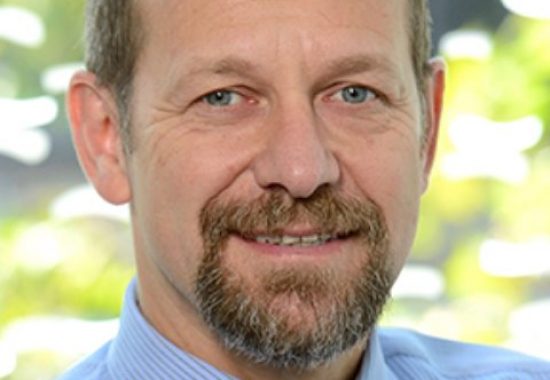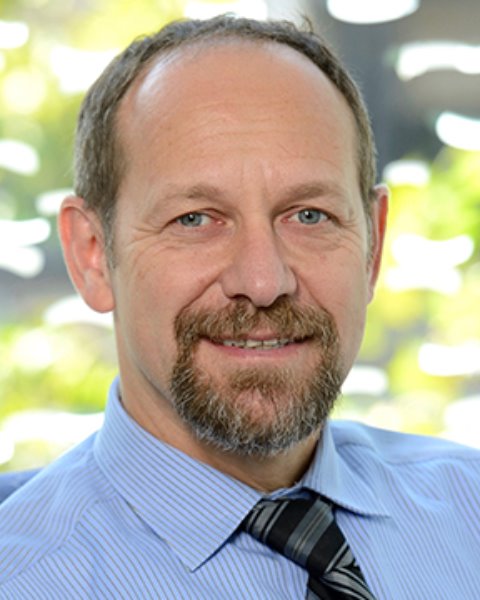Moss Rehabilitation Research Institute is dedicated to conducting rigorous, high-quality science from theory-driven research to clinical treatments in neurorehabilitation. To help ensure the Institute continues to operate at the cutting edge of the field, MRRI maintains a Scientific Advisory Board composed of experts spanning the Institute’s research foci. Pablo Celnik, MD, Director of the Department of Physical Medicine and Rehabilitation and Professor of Physical Medicine and Rehabilitation at Johns Hopkins Medicine, has been part of MRRI’s Scientific Advisory Board since the Board was created. Learn more about Dr. Celnik and his role on the Board in the interview below.
1) How did you get interested in medicine and rehabilitation?
In high school, I read the book Dragons of Eden by Carl Sagan, and this book talked about the phylogeny of the nervous system and how it evolved in different species over time. This was fascinating to me and sparked my interest in neuroscience. The brain was also one of the major unexplored frontiers in science where very little was understood. So, it was either neuroscience or astrophysics, and I chose neuroscience. I went into medicine and focused on neurology while studying at the University of Buenos Aires School of Medicine in Argentina.
When I became a physician, I was always very curious. In particular, I wanted to know more about how patients recovered after neurological damage, and why some patients recovered while others did not. Being a physician wasn’t getting me the answers I sought, so I started learning more about the science of the mechanisms underlying recovery. I pursued a neurorehabilitation fellowship at the University of Maryland and really enjoyed it.
At that time, I had friends in Baltimore and wanted to continue living in the area, and Johns Hopkins happened to be in Baltimore as well. It was a case where the right opportunity popped up at the right place at the right time. I completed another residency, this time in rehabilitation medicine at Johns Hopkins, in order to continue my work to better understand recovery and rehabilitation. Johns Hopkins is well-known for its scientific excellence, so I have remained there ever since doing rehabilitation research.
2) How did you become a part of MRRI’s Scientific Advisory Board, and what are your roles and responsibilities as a member?
I’m honored and privileged to be part of the Scientific Advisory Board at MRRI, and I have served on the board for many years. Initially, I was invited alongside a few others to visit MRRI and provide an external review to see what kinds of research they were doing and suggest strategies to improve research capacity and efficiency. I had a fantastic visit and really enjoyed interacting with the researchers there. At the time, John Whyte, MD, was the Director, and he invited us back later to form the Scientific Advisory Board.
The work that happens at MRRI is very, very important. It’s one of those gems in rehabilitation research in the country, if not the world. As part of the Scientific Advisory Board, I meet with the leaders at MRRI to discuss their scholarly activities from the prior year and plans for the future. They speak with the Board about challenges they have been dealing with and potential areas of opportunity as well. As an external advisor, you can provide relatively unfiltered feedback and advice, which stimulates discussion and makes it really interesting. I think this is helpful to the organization. Members of the Scientific Advisory Board may mention ideas for people to consider, suggestions for the leadership, areas where MRRI should advocate for itself, and other ways the Institute can continue moving forward. Selfishly, I also have an opportunity to learn more about the exciting research being conducted at MRRI, and this can help generate new ideas and research collaborations.
3) Can you tell us more about your interactions with MRRI and MRRI scientists?
While I haven’t directly collaborated much with MRRI scientists, some of the current faculty at MRRI trained at Johns Hopkins, and some of them were one degree of separation from me in terms of when they were postdocs or PhD students there. So, there is some continuity where I met scientists when they were students at Johns Hopkins, and now I am providing them with advice and ideas now that they are faculty at MRRI. The Scientific Advisory Board provides feedback both to MRRI as an organization, but also directly to the scientists on some of the work they are doing. In that sense, it is more of a collaboration where I can advise on science related to movement control, transcranial magnetic stimulation, and motor learning, which are my areas of expertise.
In addition, there is an outstanding culture of collaboration and support at MRRI across the faculty and staff. It’s like a small family where they help each other, and they care about each other. That’s what makes places special, and I think MRRI is very special in that regard. I’m also glad to see that the Institute continued to be highly successful following the transition of leadership over the years, and it’s poised to continue growing in a nice way. It is an exciting time for MRRI.
4) What have you enjoyed most about working with the team at MRRI?
As part of the Scientific Advisory Board, I have given the group suggestions and advice over the years. It is really rewarding to come back a year later and see that people took those suggestions and advice, and that they were helpful because they moved the needle in terms of further enhancing conditions for the faculty and their ability to do great work.
5) As an expert in the field, what do you think are the biggest challenges or opportunities right now in rehabilitation and rehabilitation research?
There are a lot of opportunities for growth in the science of rehabilitation, including population health, capitalizing on the explosion of measurement tools, wearable devices, ubiquitous measurement, electronic medical records, and artificial intelligence, and all of these involve big data. The question I have been thinking about and discussing with others is “What role will big data and technology play in rehabilitation?” I think this is one of the interesting frontiers for us as a field that has been developing in the last few years, and it’s going to start picking up even more momentum.
Another emerging area that I think is really interesting is regenerative rehabilitation. People have been looking into it more on the basic science side, and I think there will be an acceleration in genetics and tissue engineering research, that as rehabilitation professionals, we need to consider. This is an area of active research, and it’s something that we need to keep in mind. While these are a little outside of traditional neurorehabilitation and my areas of expertise, they are fascinating.
Within my research area, there continue to be very interesting ideas and new developments on brain stimulation and spinal cord stimulation to try to augment recovery mechanisms for patients with neurological conditions. With new research showing significant efficacy of these kinds of interventions, research in this area will gain even more traction, so it is another area of interest to keep an eye on.



11 comment on “Meet MRRI Scientific Advisory Board Member Dr. Pablo Celnik”